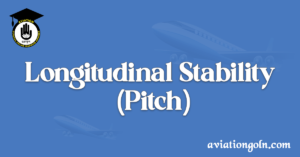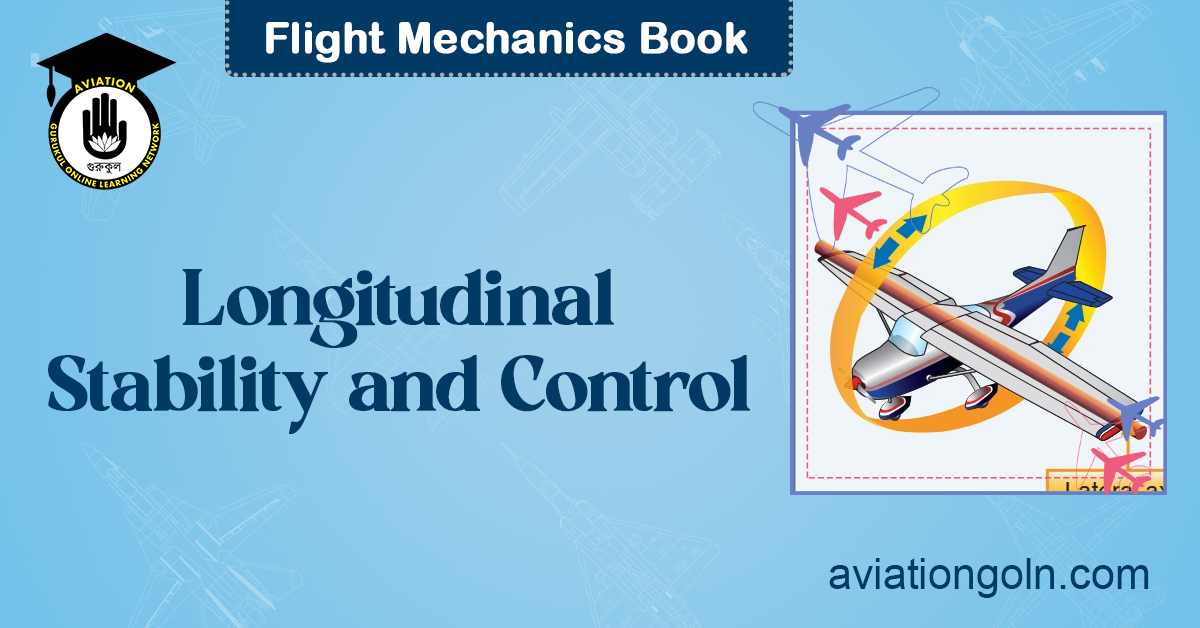Understanding the principles of stability and control is crucial in the realm of aviation. In the context of aircraft, stability refers to the aircraft’s ability to return to its initial condition following a disturbance. Longitudinal stability, or pitch stability, specifically refers to the aircraft’s behavior around its lateral axis. This detailed exploration dives into the intricacies of longitudinal stability, offering insights into its significance, how it works, and how it is maintained and controlled.
Longitudinal Stability (Pitch)

1. Introduction to Longitudinal Stability
An aircraft’s stability in the longitudinal plane (nose up and down movements) is termed as its longitudinal stability. It’s centered around the lateral axis, which runs from wingtip to wingtip. Stability in this context dictates how the aircraft reacts to pitch disturbances, such as gusts of wind from the front or rear. Ideally, an aircraft should be stable enough to counteract such disturbances on its own without the need for pilot intervention.
2. Center of Gravity (CG) and Neutral Point
At the heart of longitudinal stability is the relationship between two critical points: the Center of Gravity (CG) and the Neutral Point (NP).
- Center of Gravity (CG): This is the point at which an aircraft would balance if it were possible to suspend it. It’s the point where all the weight of the aircraft is concentrated. An aircraft’s CG can move based on fuel burn or load distribution.
- Neutral Point (NP): The NP is a point where the moment arm (distance) created by the aerodynamic force and the aircraft’s weight is zero. Essentially, it’s the aerodynamic balancing point of the aircraft.
For an aircraft to be longitudinally stable, its CG must always be ahead of its NP. If the CG moves behind the NP, the aircraft will become unstable.
3. Aircraft’s Response to Pitch Disturbances
Consider an aircraft that encounters an up-gust, pitching its nose upwards. The immediate response and subsequent behavior of the aircraft in this situation will determine its longitudinal stability:
- Positive Stability: If the aircraft, after the initial upset, tends to return to its original flight path or attitude, it is said to have positive stability.
- Neutral Stability: If the aircraft remains in the new attitude without tending to return to its original condition or continuing to pitch, it exhibits neutral stability.
- Negative Stability: If the aircraft continues to pitch even more instead of returning to its original state, it is showing negative stability.
4. Stability vs. Maneuverability
There’s often a trade-off between stability and maneuverability. Highly stable aircraft resist changes in their attitude, making them more comfortable for passenger flights. However, such aircraft may not be very maneuverable, which can be a limitation in roles like fighter jets. Conversely, highly maneuverable aircraft might exhibit less stability, necessitating more active control by the pilot.
5. Factors Affecting Longitudinal Stability
Several factors can influence an aircraft’s pitch stability:
- Wing Location: High-winged aircraft tend to have better longitudinal stability because the weight of the fuselage acts below the lift line, producing a stabilizing effect. Conversely, low-winged aircraft may have reduced stability due to the fuselage weight acting above the lift line.
- Horizontal Tail Surface: The size, shape, and location of the horizontal tail play a crucial role in longitudinal stability. A larger tail, further from the CG, will provide more stability.
- Airfoil Camber: The shape and camber of the wing and tail airfoils can also affect longitudinal stability. An aftward shift in the center of pressure (where lift acts) due to a change in the angle of attack can impact stability.
- Aircraft Loading: Overloading an aircraft, or loading it improperly such that the CG shifts rearward, can reduce stability and might even lead to instability.
6. Control Surfaces and Longitudinal Stability
The primary control surface affecting longitudinal stability is the elevator, located on the horizontal tailplane. By deflecting the elevator up or down, the pilot can induce a pitching moment, altering the aircraft’s angle of attack. The pilot can, therefore, control the aircraft’s pitch attitude and counteract any unwanted disturbances.
7. Longitudinal Stability Augmentation Systems
Modern aircraft often employ electronic stability augmentation systems. These systems sense disturbances, process the information, and automatically make control surface adjustments to maintain desired flight conditions. Such systems can help strike a balance between stability and maneuverability.
8. Conclusion
Longitudinal stability is a fundamental aspect of aircraft design and operation. It ensures that an aircraft can safely and efficiently counteract disturbances in pitch and maintain a comfortable flight environment. Balancing stability with the needs of maneuverability, especially in the modern age of aviation, is a complex but essential task, calling for a deep understanding of aerodynamics, control systems, and aircraft design principles.
Note: This article provides an overview of the topic. In practice, the subject of longitudinal stability is more nuanced and would be explored in greater depth in specialized aerodynamics and aircraft design textbooks or courses.
